SHOP DRY EYE CARE TODAY!
Use code VISIONARYEYE20 at checkout for 20% off!
Here at Visionary Eye Center, we treat plenty of patients with blepharitis, so you aren’t alone. An estimated 82 million Americans have been diagnosed with the eyelid disease. As eye doctors in Reno with decades of experience, we strive to make sure that our patients understand the cause of blepharitis: simply just an abundance of bacteria near the eyelids.
Because the disease contributes to dry eye syndrome, it leads to other symptoms like itching, a gritty feeling in the eyes, eyelid crusting that looks like dandruff, and red, swollen eyes. In addition to serious discomfort, blepharitis can negatively affect those scheduled or in the process for cataract or LASIK refractive surgeries. If left untreated, blepharitis can cause patients to experience chronic red-eyes, styes, or damage to their corneas.
There are two different types of blepharitis: posterior and anterior. Posterior blepharitis is usually caused by inflammatory conditions like rosacea. Anterior blepharitis is typically caused by microbes like Staphylococcus bacteria (which causes staph infections) and Demodex mites.
Demodex are mites that live on skin and thrive in hair and lash follicles. Younger children or the elderly are more likely to have an abundance of mites. Demodex mites’ average lifespan is estimated to be several weeks, but that is enough time to cause serious cases of blepharitis. They cause irritation with burrowing and laying eggs, and producing small amounts of waste products which feeds further bacterial growth.

Treatment for blepharitis is possible. One common option for Reno optometrists to utilize is ZEST, or Zocular Eyelid System Treatments. It works by gently exfoliating the eyelids to restore the natural state and cleans the eyelid margins to open up the meibomian gland. ZEST ensures the glands can release oils into the eye to create a healthy tear film and reduce symptoms of dry eye, all while providing thorough treatment for blepharitis and other potential diseases. This natural procedure is completed in about ten minutes and helps solve crusting around the eye.
Blepharitis can damage the meibomian glands along the edge of the eyelid where the eyelashes are. These glands create oil needed for tears. The oily layer is the outside of the tear that prevents them from drying too quickly. A number of eye issues can involve these glands, and for more information on additional treatments and procedures, head to our informational page on dry eye syndrome.
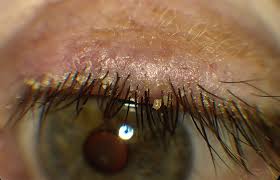
It is not too late to seek out treatment for Demodex mites on your lids or blepharitis. With a variety of eye care methods, including the use of ZEST, the team here at Visionary Eye Center can relieve your eye concerns. Book an appointment today with the best Reno optometrists in the city.
Keratoconus may not be a familiar word for many people, but the disease affects a large number of eye care patients. Keratoconus (KCN) is a progressive eye disease that causes complications with the cornea. It results in vision problems that range from mild to severe and will likely require some form of corrective methods to improve the person’s ability to see.
Through years of research, professionals have been able to determine generally how many people have keratoconus, and the results are surprising. Since a 2017 study performed by Dr. Daniel Godefrooij, it was found that KCN affects roughly 5-10 times more patients than the original findings suggested. Let’s take a deeper dive into what keratoconus is below.

As stated above, keratoconus is a progressive eye disease that can impair a person’s vision and significantly affect the cornea. For patients with keratoconus, the cornea in one or both eyes becomes thin and scars in the center. Specifically, keratoconus involves the central portion of the cornea, which affects a large portion of the eye. The result is a noticeably protruding cornea that has an irregular conical shape followed by poor eyesight.
It’s typical for keratoconus to become present during puberty, or a person’s teen years, and worsens or progresses over time. By the 5th or 6th decade of life the disease will stabilize, but typically a patient with keratoconus will experience irregular astigmatism or scarring that might not be treatable by corrective lenses alone. In the worst cases, a patient may require a corrective procedure known as a corneal transplant.
Originally, research done in part by NKCF (National Keratoconus Foundation) suggested that 1 in 2,000 people were diagnosed with KCN. Years later in 2017, these numbers were questioned by Dr. Daniel Godefrooij who determined that these rates are significantly higher than what was traditionally found. When determining how many people have keratoconus, LASIK (laser in situ keratomileuses) eye surgery played a critical role.
LASIK is a popular method of vision correction that uses lasers to correct the refraction of eye lenses for patients suffering from myopia, hyperopia, and astigmatism. With the increased popularity of LASIK therapy came the realization that keratoconus affects more people than had been previously reported.
Today, Dr. Daniel Godefrooij reports the ratio of people suffering from KCN being 1 in 375. That’s more than 5 times as many people as researchers had originally found.
The cause of KCN is still mostly undetermined, but the development and progression of the disease have been heavily studied over time. Some research has suggested that chronic rubbing of the eyes may contribute to and possibly expedite the overall progression of the eye disease. The most common symptoms of keratoconus to be aware of include:
The plan of treatment for keratoconus will depend on the severity of the patient’s condition. Of utmost importance is early detection, as a recently FDA approved treatment called corneal cross-linking is now available to stabilize the condition. Mild KCN may be treated with the use of corrective lenses, such as eyeglasses or contact lenses. Moderate cases will likely require specialty contact lenses like gas permeable (GP), hybrids or scleral lenses to provide acceptable vision. However, severe forms of KCN may require more aggressive treatment methods such as a corneal transplant or Intacs Corneal Implants.
Keratoconus treatment focuses primarily on slowing the progression of the disease and improving vision. Essentially, there are three types of treatment to help with KCN symptoms which consist of corrective lenses, therapy, or surgery.
If you’ve been experiencing vision problems, it’s important to meet with your Reno optometrist to properly diagnose the issue at hand. You may be suffering from keratoconus and not even realize it. A licensed, trained optometrist can evaluate your vision problems, assess your eye health, and provide an effective method of treatment.
It may be necessary to consider eye surgery and specialty contact lenses to correct your vision problems caused by keratoconus. Dr. Bolenbaker at the Visionary Eye Center can help to develop a unique treatment plan that’s designed to suit your eye care needs.
It’s August, and that means it’s National Children’s Vision Month! Back-to-school season is also here, and there couldn’t be a better time than before your child returns to the classroom to take them to the eye doctor. One out of four school-age children suffer from some type of uncorrected vision problem, which can seriously impair their success in the classroom. Children are not always able to recognize by themselves that blurry vision or struggling to see near or far is actually a concern. And vision problems aren’t always issues with blurry vision, but rather eye alignment and focusing issues that lead to struggles in school, despite the fact they can see the classroom board clearly.
A routine school eye screening by an optometrist is necessary to detect vision problems and maintain overall optical health. You may have believed a school or pediatrician vision screening is enough. These are brief exams that evaluate visual acuity, the ability to read small letters or see a picture on a chart. These screenings are not comprehensive and can’t evaluate the way your child’s eyes work while reading or doing school work, nor can they adequately evaluate your child’s eye health. This means many vision problems aren’t detected, contributing to your child struggling in their academics or athletics.

According to the American Academy of Ophthalmology, it’s recommended that children receive an eye evaluation once before the age of 3, and at least every one to two years until the age of 19. Preschoolers should see a pediatric optometrist to ensure their eyes are aligned and focusing properly to address developing issues and halt progress down the road. During adolescence, a person’s eyesight can change rapidly and often, especially impacted by puberty, so they should continue to receive annual checkups. Of added importance, detecting myopia early is key as we now have FDA-approved technologies like the MiSight lens to slow the progression of near-sightedness or myopia. So we can now actually do something about your child’s prescription getting worse every year using myopia control techniques.
Scheduling an eye exam with your child’s optometrist before school begins will ensure they start the school year with the best overall vision to succeed! It eliminates the concern that vision or eye health could be interfering with your child achieving their highest academic potential. Proper eyesight can also prevent headaches, fatigue, and lack of focus in the classroom. You should also have your child’s lens prescription checked and kept up-to-date, especially if they are active in team sports or have a new classroom seat each year. Being proactive in ensuring your child regularly visits an optometrist is essential. After all, they own their eyes for life!
Vision problems can be a huge distraction in your daily life, making even casual tasks such as driving extremely difficult. One common vision problem that patients may experience is night blindness. You may be asking yourself, "what is night blindness?" and you're not alone. Someone with night blindness will have difficulty seeing in dark environments, which is especially noticeable when driving at night. Night blindness can be dangerous in some situations, so it’s critical that you get the help you need to alleviate your symptoms and get your eye health back on track.
For more information about night blindness, read the article below or contact our Reno optometrists today.
 What is night blindness?
What is night blindness?Night blindness, professionally known as nyctalopia, affects your ability to see at night or in poor lighting conditions. Although many people believe night blindness is an eye condition/disease all of its own, this actually isn’t true. Night blindness is the result of an underlying health issue such as cataracts, diabetes, or myopia. It’s also important to note that night blindness does not result in actual blindness but does lead to impaired vision in dark environments.
Night blindness often presents itself when transitioning from a well-lit area to a dark, poorly-lit environment. Our eyes naturally adjust and adapt to changes in light, but those with nyctalopia are typically unable to do this, resulting in poor visibility. If you have difficulty driving at night due to lousy vision or struggle to see in dark restaurants, movie theaters, etc., then you likely suffer from night blindness. However, many types of night blindness are treatable and symptoms often subside once the underlying issue has been resolved.
There are several possible causes of night blindness including:
 Symptoms:
Symptoms:The most common symptom of night blindness is experiencing poor vision in dimly lit or dark environments. However, this isn’t the only symptom that may present itself in those with nyctalopia. Other symptoms include:
Not all forms of night blindness can be treated, but a majority of them can be managed or remedied in some way. The treatment for your night blindness will vary depending on the cause of your condition. For example, if your night blindness is caused by myopia or nearsightedness, then new glasses or contact lens prescription may be recommended to alleviate your symptoms. And if your night blindness is caused by cataracts, surgery may be the only option for relief.
Other night blindness treatments may include a change in glaucoma medication or a visit with a retinal specialist. To determine your best course of action, it’s essential to visit your Reno eye doctor. They’ll be able to diagnose the cause of your night blindness and will provide the best treatment plan based specifically on your needs.
 See how you can prevent night blindness
See how you can prevent night blindnessAlthough some night blindness may be the result of a genetic disposition, other forms of nyctalopia may be prevented with some simple lifestyle changes. Try making these easy changes in your everyday life to help prevent the onset of night blindness:
Here, at the Visionary Eye Center, we strive for customized eye care solutions for all of our patients in the Reno-Sparks area. As each patients’ needs are unique, your treatment plan should be unique to you as well. We’ll work with you to determine the underlying cause of your night blindness to develop a solution that addresses your symptoms and treats your vision problems.
Our office uses the latest diagnostic technology and treatment solutions so you can receive cutting-edge options and not the bulk products that are found in other optometrists’ offices. Contact us today to get started with your personalized eye treatment. We look forward to meeting you!
Children and infants aren’t exempt from experiencing vision problems. Like adults, children can suffer from a variety of eye conditions including amblyopia, strabismus, and refractive errors such as nearsightedness and farsightedness. Genetic diseases such as glaucoma and cataracts may also affect children at a very young age. Thankfully, with regular vision checks, your child’s eyesight difficulties can be detected and treated early on. Start by learning the signs of vision problems in babies and children so you and your pediatrician can refer to an optometrist and rectify the situation before it gets out of control.

Eye exams should be done by your optometrist regularly. Unfortunately, pediatrician screenings aren’t designed to detect the subtle signs of early disease or vision problems. So, just like it is important to have your child see the dentist early, so too is it important to bring your child to an eye care professional at the following ages even if nothing seems wrong:
All children who wear glasses should have their vision checked yearly at their annual checkups. At these appointments, it will be determined how the vision problems are progressing and new glasses or contact lenses will be prescribed if necessary.

Vision problems may appear at any point in a child’s life. Many of the signs of vision problems in babies and children will be easy to spot, but some may go unnoticed if not closely monitored. If you notice any of the following signs or symptoms in your child, be sure to connect with your optometrist to see if further action should be taken:
Some vision problems may have no symptoms at all. Commonly, amblyopia (lazy eye) provides no obvious warning signs, which is why it’s so important to have your child’s eyes checked regularly. Tests can be done to determine if an eye condition is present or developing. Catching these signs early on is critical as it can help prevent your child from suffering chronic vision problems.
If you are concerned about your child’s eye health, or if you’re still wondering what are the warning signs of vision problems in babies and children, don’t hesitate to schedule them an appointment with an optometrist. Here at the Visionary Eye Center, we are equipped to offer pediatric eye care with the best options, treatment, and technology available.
We have developed techniques and technology specifically for children of all ages. When it comes to your child’s eye health, being proactive is essential. Feel free to contact us with any questions or concerns about your child’s vision, and don’t hesitate to schedule an appointment with us today! Visionary Eye Center is your home for custom vision solutions, and we take pride in offering top-tier care for each patient.
Many people will experience a migraine from time to time. In fact, an estimated 1 billion people across the world suffer from migraines. However, the headaches and migraines that are associated with vision or cause vision problems, are rarely typical. If you’re prone to migraines and headaches that cause vision impairment or even vision loss, you may be suffering from an ocular migraine. You may be wondering “what is an ocular migraine?” and you’re not alone. They’re often misunderstood or misdiagnosed as a different type of headache or eye condition which leaves many confused about what issue they are being affected by.
Learn more about what an ocular migraine is below, along with noticeable symptoms, possible treatments, and prevention methods of this eye condition.
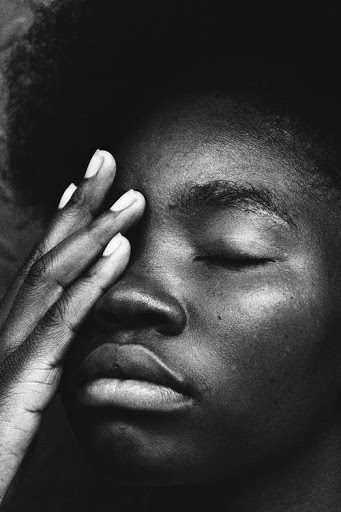 What is an Ocular Migraine?
What is an Ocular Migraine?An ocular migraine is defined as being a rare condition that affects your vision in one eye. This type of migraine is characterized by temporary loss of vision or even blindness in just one eye, not both, and vision typically returns to normal within an hour. These migraines may be painless for some people or may be accompanied by pain from a migraine headache. Though ocular migraines often cause impaired vision in one eye, their effects may differ from patient to patient.
Ocular migraines are often confused with a much more common condition called migraine aura that usually affects both eyes rather than just one. It has been determined that ocular migraines are most likely caused by reduced blood flow or spasms of blood vessels behind the eye. Changes that occur across the nerve cells in the retina may also lead to an ocular migraine.
It’s important to note that regular migraine headaches can cause vision problems such as blind spots and flashes of light, which are not related to an ocular migraine. The biggest difference between the two conditions is that an ocular migraine causes vision loss in just one eye, while a regular migraine results in impaired vision in both eyes. When visiting your Reno optometrist, the doctor will first begin ruling out conditions that present similar symptoms to ocular migraines. These may include:
There are several telling symptoms of an ocular migraine, however, these can sometimes be difficult to determine on your own. Fortunately, a qualified, licensed optometrist can help you better assess your symptoms and provide appropriate care in return. Be sure to observe symptoms such as:
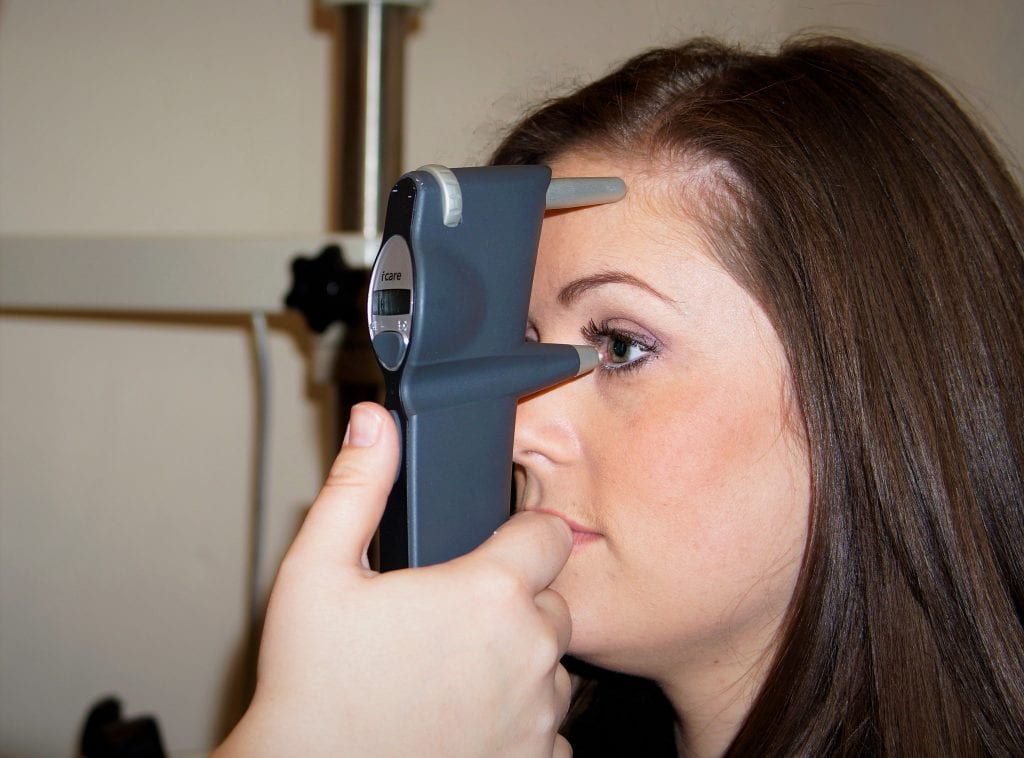
Because of the transience of this condition, treatment is often not necessary during the time of the occurrence. The vision loss that you experience should subside within an hour, but it is important to take a few precautionary measures to prevent further injury or discomfort during an episode. Once you notice the vision loss, you should stop whatever you’re doing and rest your eyes until your vision appears normal. If your vision problems are accompanied by a headache, take an over-the-counter pain reliever to help alleviate the discomfort.
Other methods of treatment may include medications or medical devices that are intended to limit or prevent the ocular migraines from happening altogether. Medications that are commonly prescribed to treat epilepsy have proven to be an effective treatment for ocular migraines. These include valproic acid and topiramate. Other medications that may be effective are CGRP inhibitors, blood pressure medicines (such as beta-blockers), and tricyclic antidepressants.
Fortunately, there are some simple lifestyle changes you can take to prevent an oncoming ocular migraine that have proven to be quite effective. Like traditional migraines, ocular migraines can be triggered by a number of different factors. To prevent a debilitating ocular migraine from occurring, try to avoid the following to the best of your ability:
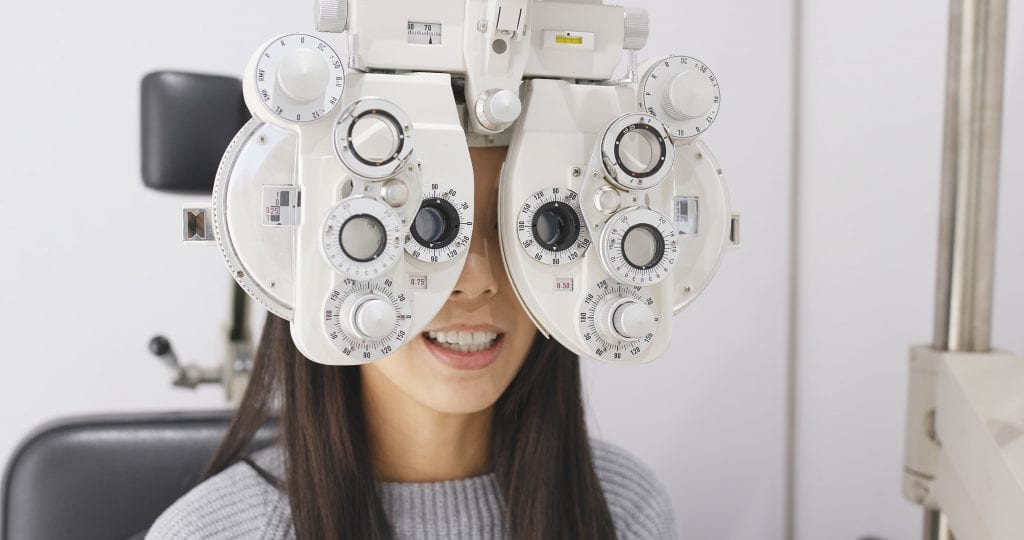 Visit Your Reno Optometrist
Visit Your Reno Optometrist Ocular migraines are quite rare, and the symptoms are often caused by other underlying problems. To determine the true source of your complications, be sure to meet with the Reno optometrists at Visionary Eye Center. Their team of dedicated, professional optical specialists will be able to help you with your vision problems and provide effective solutions and care to help you feel better. Connect with the experts at Visionary Eye Center today!
If you have been blessed with good eyesight it is easy to take your vision for granted, but in reality, your life would change dramatically if something were to happen to your eyesight. Eyes usually don’t need a whole lot of attention, but it’s important to be able to realize if your eyes are trying to tell you something.
However, there is a fine line between harmless eye irritation and serious issues, but how do you know which eye symptoms you should never ignore? Keep reading and we will explore some eye issues you should always take seriously.
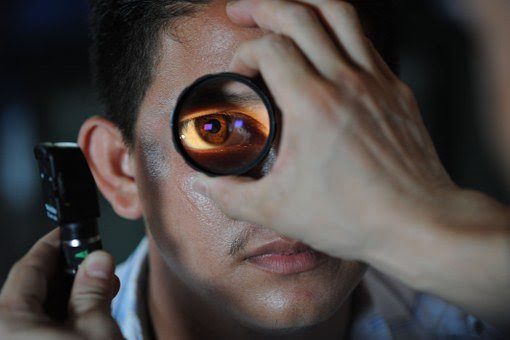
While it is sometimes difficult to assess your own personal eye well-being, one tell-tale sign of serious eye issues is pain. If it comes on suddenly, lasts for a few minutes, and is pretty much unexplainable (i.e. nothing irritated it or caused it pain) then you should never ignore this eye symptom.
Right away, you should get in to see the eye doctor. It may be brief, but this is the way that your eye is telling your mind that something is wrong. It could be nothing, but do you really want to risk your eyesight on that?
If you haven’t ever experienced this before, it can be quite alarming, especially if it is vivid for the first time. Floaters are the little squiggly things that sometimes appear before your eyes, best seen when looking at the blue sky or a white wall.
You may have experienced this before and it is quite normal, but if this is happening frequently or causing delusion or pain you should definitely get it looked at.
If you have floaters and are also experiencing flashes of light along with them, it could be a sign of a retinal tear that could possibly lead to a retinal detachment.
Blurry vision can be the effect of a few different eye issues, most notably dry eye. Dry eye occurs when there is simply not enough lubrication of the eye and can cause blurry vision, redness, and itchiness.

Other factors can also cause blurry vision like smoke, wind, extreme heat or cold, certain medications, diabetes, and pregnancy. The easy solution to blurry vision could be as simple as eye drops, but if this doesn’t help improve the situation then you should see the optometrist.
If your blurry vision suddenly gets more severe, it could be a sign of high pressure in your head and spinal cord or inflammation of your optic nerve.
Double vision can be extremely dangerous if it is present in both eyes. It could be a sign of neurological problems, and you should go directly to the emergency room if you notice double vision in both eyes. This could also be accompanied by slurred speech or pain.
However, if double vision is present in one eye it could be a sign of a corneal issue or retinal issue, and you should schedule an appointment with an optometrist if it is occurring regularly. You definitely do not want to ignore double vision.
While eye redness can be an effect of many different things including allergies, smoke, and lack of sleep, it can also be a sign of pink eye or conjunctivitis. If your eyes are irritated and red you could just need a few days of eye drops, but if pain, a burning sensation, or blurred vision is present you should consult an eye specialist.
Red eyes can be totally harmless if only happens rarely but could be a sign of serious eye infection if it happens often or you wear contacts regularly.
Some peoples’ eyelids naturally hang down a bit lower and as you grow older gravity starts to take an effect, but a sudden droop in one or both eyelids could be a sign of stroke, muscle disease, or a nerve problem.
A gradual increase of drooping eyelids is natural, but if this occurs out of nowhere then you should take it seriously and report to the emergency room if any other symptoms accompany this.
Hopefully, this blog has increased your knowledge about which eye symptoms you should never ignore and also given you some peace of mind. Visionary Eye Center is your home for custom vision solutions, and we take pride in offering top tier care for each patient.
We want our patients and community to be well informed to make the best health decisions for you and your family. Please don’t hesitate to contact us with any general inquiries or concerns, and we look forward to meeting you!
As a child’s health is the number one priority to parents, surprisingly many are inattentive to the importance of eye health. Eyesight issues can impact a child’s life in every fashion of ordinary life from school to sports and socializing. Children cannot always vocalize exactly what’s wrong, and a lot of times it’s hard for them to even realize.
You may be asking yourself, “Does my child really need glasses?” Healthy eyesight is crucial to a child’s well-being, so in this blog we will explore some of the most common signs to tell if your child really needs glasses or not.
Before we get into signs of possible eye issues, the most important thing is to make sure your child goes in for frequent checkups. Oftentimes, kids are only taken in occasionally if there is nothing wrong the first time, but doctors recommend children should be seeing an eye doctor at least once a year.
Many schools perform a regular vision screening, but miss 75% of children with vision problems. The screening performed by your pediatrician using a picture chart tacked to the wall is similarly inadequate. If your child fails a school or pediatrician vision screening make sure to bring them in immediately for a comprehensive eye exam. Eye exams by an optometrist are really the only foolproof way for a true diagnosis, and it often these vision issues will continue to worsen if you don’t stay proactive about the situation.
1) Squinting
Squinting compensates for your eyes’ inability to clearly see an object by reducing misfocused light. If you notice your child has a tendency to squint while looking at far away objects (nearsightedness) or squinting while looking at close up objects (farsightedness), it may be time for a checkup.
2) Tilting of the head
If you see your child continuously tilting their head, especially if you notice they are attempting to strain their vision, it could be an attempt to increase vision clarity by changing their sight angle. This could be a sign that their eyes are misaligned or an imbalance of the eye muscles.
3) Sitting too close
It could seem like a natural child thing to do to sit too close to the TV or hold devices or books close up to their face, but it could be a sign of nearsightedness or myopia development. Nearsightedness affects your vision where one can see more clearly when the object is closer, and it is one of the most common vision problems for children around the world.

4) Struggling in school
If you notice your child is struggling in school or with school work, it could be a number of different things which makes it so much more important to stay informed about your child's performance in school. For a young child, school is very stimulating, and they are forced to adapt quickly, including their eyes. Vision problems can lead to a lack of focus or motivation for school work.
5) Headaches, migraines, nausea or eye pain
If your child is suffering from any of these symptoms it could be a number of different things, so just remember to listen to your children and continue to stay proactive. These symptoms could be a result of strain from the extra effort that your child must put forth if they are experiencing vision problems. This tension may cause frequent headaches or eye pain, or in more severe cases migraines and nausea could be present.
6) Covering one eye
Similar to tilting the head, covering one eye while reading, watching TV or any eye strain, can be an attempt to compensate for double vision. It could also be a sign of sensitivity to bright light (exotropia) or lazy eye (amblyopia).
7) Excessive eye rubbing
Eye rubbing is a pretty natural tendency, but it is important to monitor your child’s habits. If they are rubbing their eyes on a regular basis or during strenuous eye activity like reading or watching TV, it could be a sign of digital eye strain, dry eye or allergic conjunctivitis.
If you are concerned about your child’s eye health, or if you’re still asking yourself, “Does my child really need glasses?” you should immediately schedule them an appointment with an optometrist. Here at the Visionary Eye Center we are equipped to offer pediatric eye care with the best options, treatment and technology.
We have developed techniques and technology specifically designed for children where many other optometrists are not capable of seeing very young children. Feel free to contact us with any questions or concerns about your child’s vision, and don’t hesitate to schedule an appointment today!
As your eye continuously changes, your brain adapts and makes compromises with these changes, making it hard to tell if your vision is deteriorating. Based on many factors—including age, health, family medical history and personal medical history—the importance of yearly eye exams differs, but we urge you to visit an optometrist at least once a year.
As your eyes are the window to your soul, they are also the window to your overall well-being where other health issues come to light. For this blog, we will explore the importance of yearly eye exams, as well as other factors surrounding the topic.
Prevention: Even if you are healthy—or you think you are healthy—prevention is the key to lasting eyesight. Vision impairment can be avoided or prevented if you are able to catch signs early on. Especially with rising numbers of Digital Eye Strain from increasing screen time from work and school; it’s more important now than ever to get in to see your eye doctor.
Your vision changes over time: Vision changes occur naturally, but it’s nothing to be afraid of. However, these changes can and will affect your vision on a daily basis, and only an optometrist will be able to tell you exactly how these changes are affecting your vision. If these changes aren’t monitored or taken care of, you could be facing irreparable damage.

In addition, it’s especially important to visit an eye doctor yearly if you already wear glasses or contacts. You could need adjustments after a period of time, and your prescription could change from your previous visit. An out-of-date prescription poses just as much of a threat as non-wearers letting their eyesight deteriorate.
Your eyes show other health issues: As mentioned formerly, your eyes tell a tremendous amount about your overall health. Your eyes can show signs of diabetes, brain tumors, high cholesterol and high blood pressure by looking at blood vessels, arteries and cranial nerves while your eyes are dilated. These signs will show in your eyes before visible symptoms anywhere else.
Symptomless eye diseases: There are common eye diseases that show no or limited symptoms until the effects are truly upon you and create irreversible damage. By looking at the optic nerve and the condition of the cornea an optometrist can see signs of eye diseases like glaucoma, dry eye and anterior segment diseases.
For a thorough routine eye exam one should expect the following:
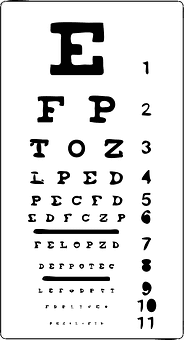
With our cutting edge diagnostic technology, Visionary Eye Center is offering a Digital Lifestyle Exam that’s perfect for all ages! With this revolutionary eye exam you can spend more time talking face to face with an optometrist on a plan for your eyes rather than staring through a machine.
With this eye exam you can expect:
You can check out everything it has to offer here!
Here, at the Visionary Eye Center, we strive for customized eye care solutions for our Reno-Sparks patients. As each patients’ needs are unique, our treatment should be as unique as you.
Our independence allows us the flexibility to use the latest technology, so you can receive cutting edge options and not bulk products that are found everywhere. Contact us today to get started with your personalized eye treatment today. We look forward to meeting you!
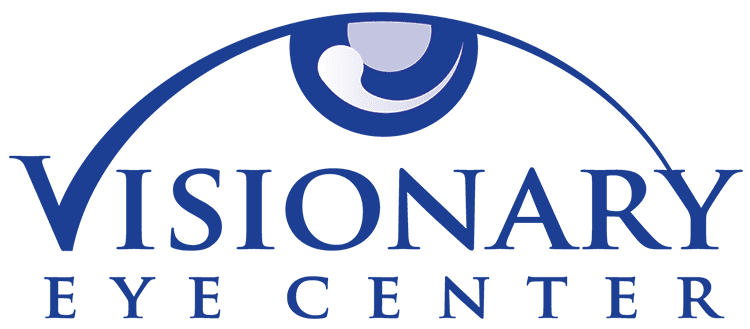 775.827.1100info@visionaryeyecenter.com8175 South Virginia Street Suite B-900
775.827.1100info@visionaryeyecenter.com8175 South Virginia Street Suite B-900